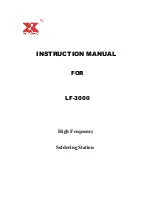
22
Elevation at Station
2000 m
Add to Station Pressure to obtain Mean Sea Level Pressure
Station Pressure, mb
Temp ºC
740
760
780
800
820
840
860
759.9
779.9
799.9
819.9
839.9
859.9
879.9
-44.0 to -34.1 246.5
253.0
259.6
266.2
272.7
279.3
285.9
-34.0 to -24.1 235.2
241.5
247.8
254.0
260.3
266.6
272.9
-24.0 to -14.1 225.0
231.0
237.0
243.0
249.0
255.0
260.9
-14.0 to -4.1
215.5
221.3
227.0
232.8
238.5
244.3
250.0
-4.0 to 5.9
206.9
212.4
217.9
223.4
229.0
234.5
240.0
6.0 to 15.9
198.9
204.2
209.5
214.8
220.1
225.4
230.7
16.0 to 25.9
191.5
196.6
201.7
206.8
211.9
217.0
222.1
26.0 to 35.9
184.6
189.6
194.5
199.4
204.3
209.2
214.2
Elevation at Station
2250 m
Add to Station Pressure to obtain Mean Sea Level Pressure
Station Pressure, mb
Temp ºC
720
740
760
780
800
820
840
739.9
759.9
779.9
799.9
819.9
839.9
859.9
-44.0 to -34.1 273.9
281.4
288.9
296.4
303.9
311.4
318.9
-34.0 to -24.1 261.2
268.4
275.6
282.7
289.9
297.0
304.2
-24.0 to -14.1 249.7
256.5
263.4
270.2
277.1
283.9
290.8
-14.0 to -4.1
239.1
245.7
252.2
258.8
265.3
271.9
278.4
-4.0 to 5.9
229.4
235.7
242.0
248.3
254.6
260.9
267.1
6.0 to 15.9
220.5
226.5
232.5
238.6
244.6
250.7
256.7
16.0 to 25.9
212.2
218.0
223.8
229.6
235.4
241.2
247.1
26.0 to 35.9
204.5
210.1
215.7
221.3
226.9
232.5
238.1
Elevation at Station
1750 m
Add to Station Pressure to obtain Mean Sea Level Pressure
Station Pressure, mb
Temp ºC
770
790
810
830
850
870
890
789.9
809.9
829.9
849.9
869.9
889.9
909.9
-44.0 to -34.1 221.0
226.7
232.3
238.0
243.7
249.3
255.0
-34.0 to -24.1 211.0
216.4
221.9
227.3
232.7
238.1
243.5
-24.0 to -14.1 201.9
207.1
212.3
217.5
222.7
227.8
233.0
-14.0 to -4.1
193.6
198.6
203.5
208.5
213.4
218.4
223.4
-4.0 to 5.9
185.9
190.7
195.4
200.0
205.0
209.7
214.5
6.0 to 15.9
178.8
183.4
188.0
192.6
197.1
201.7
206.3
16.0 to 25.9
172.2
176.6
181.1
185.5
189.9
194.3
198.7
26.0 to 35.9
166.1
170.4
174.6
178.9
183.1
187.4
191.7
TABLE 9
TABLE 10
TABLE 11
Summary of Contents for Home Weather Station
Page 1: ......









































